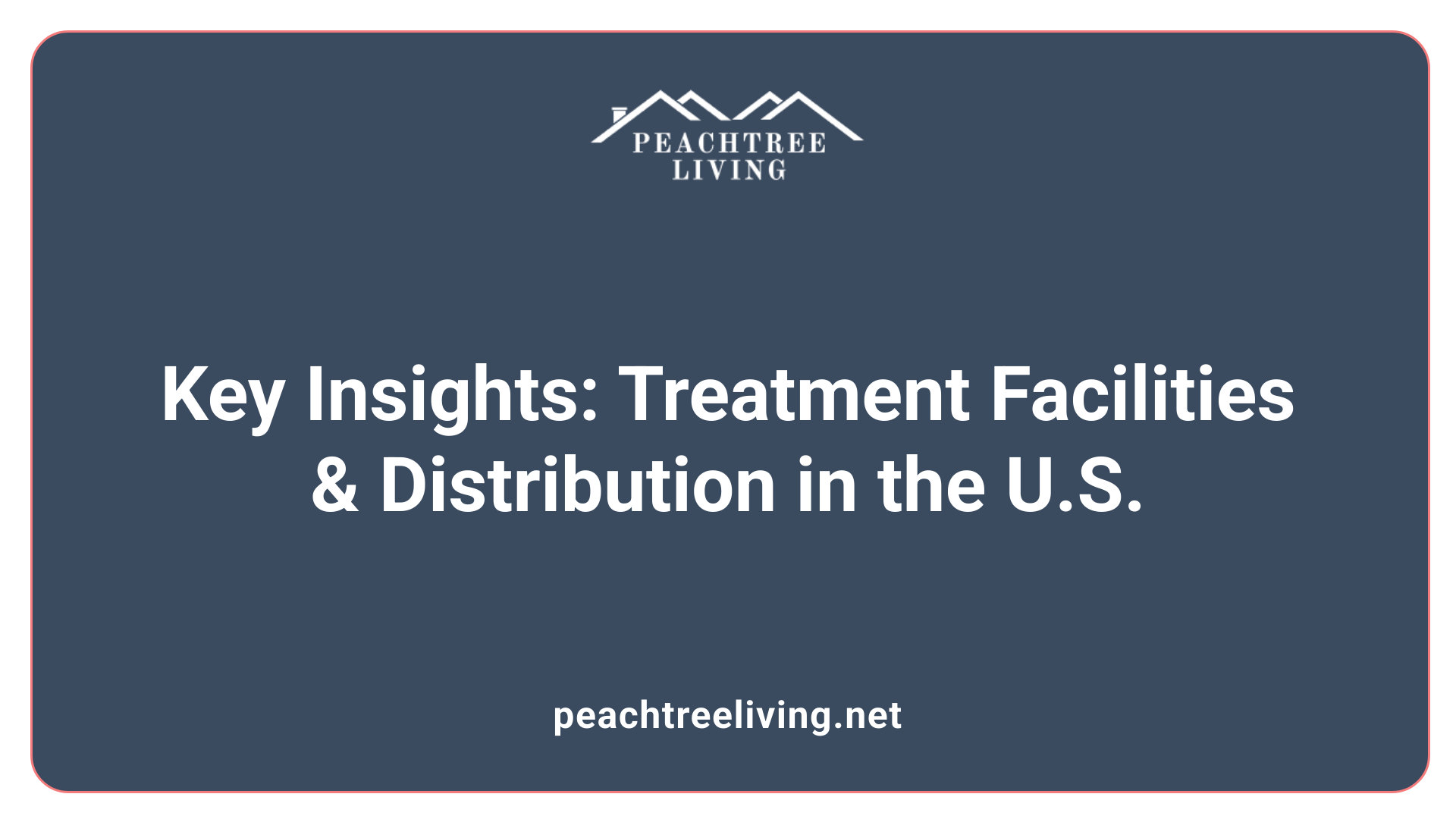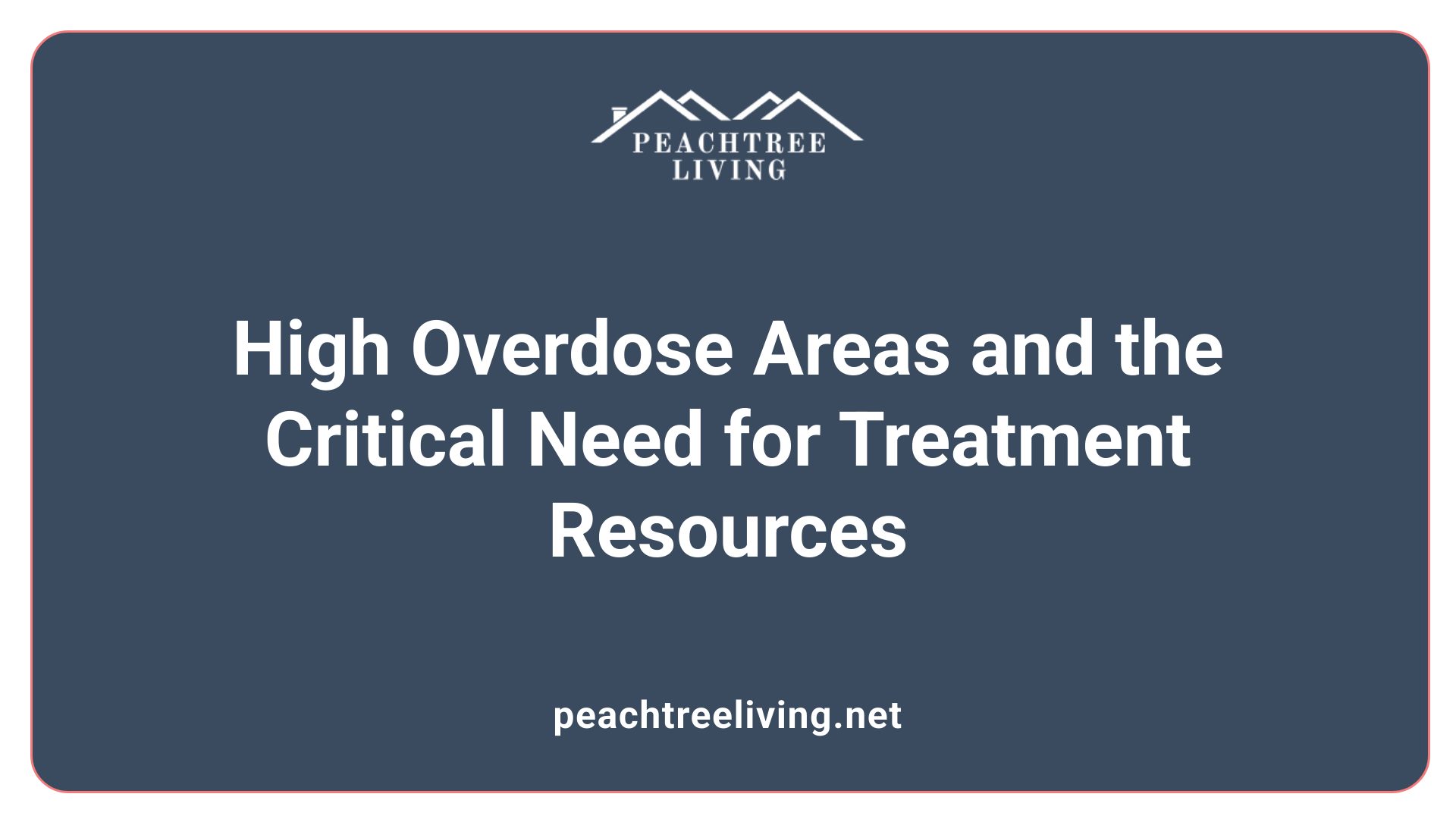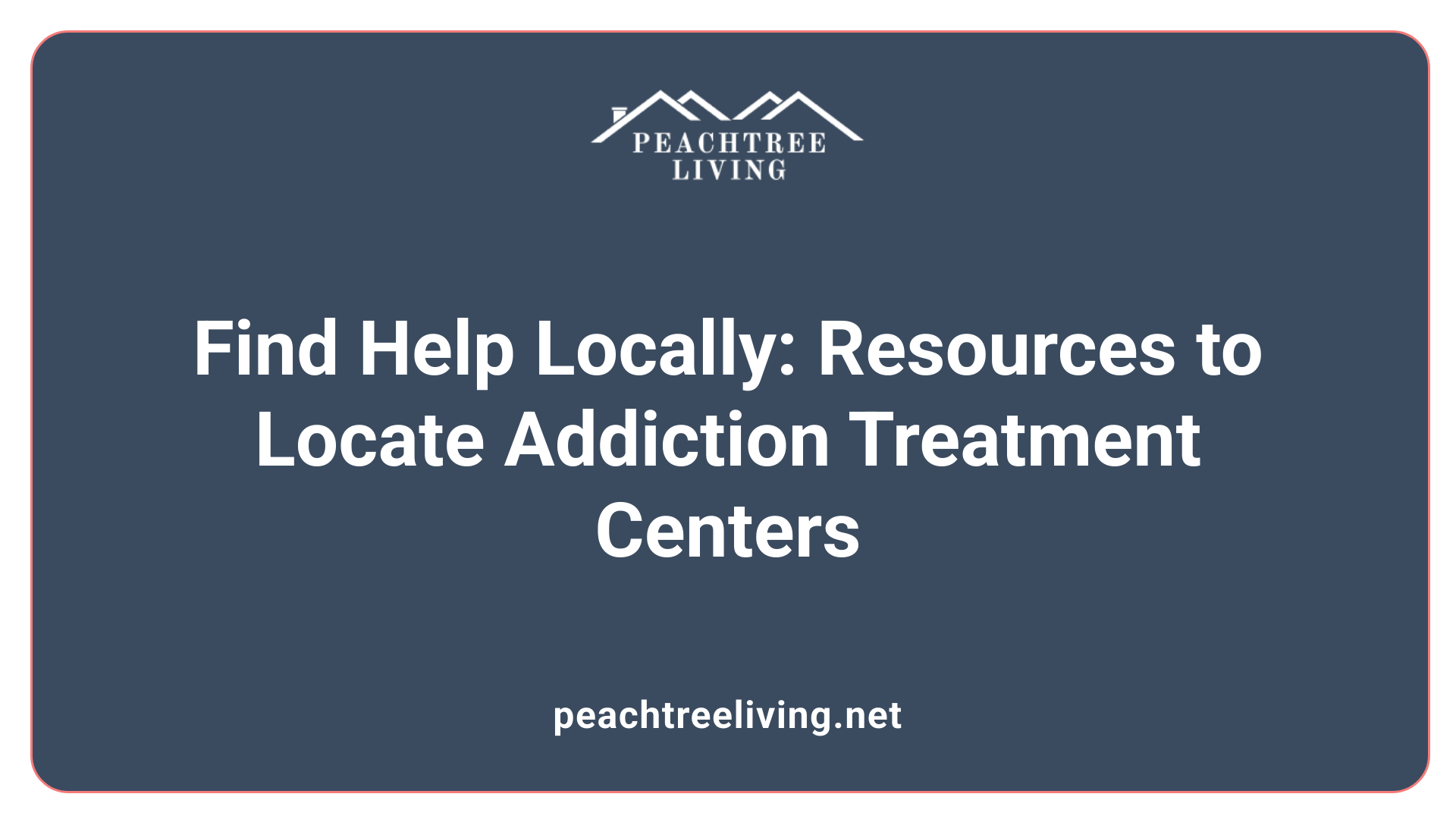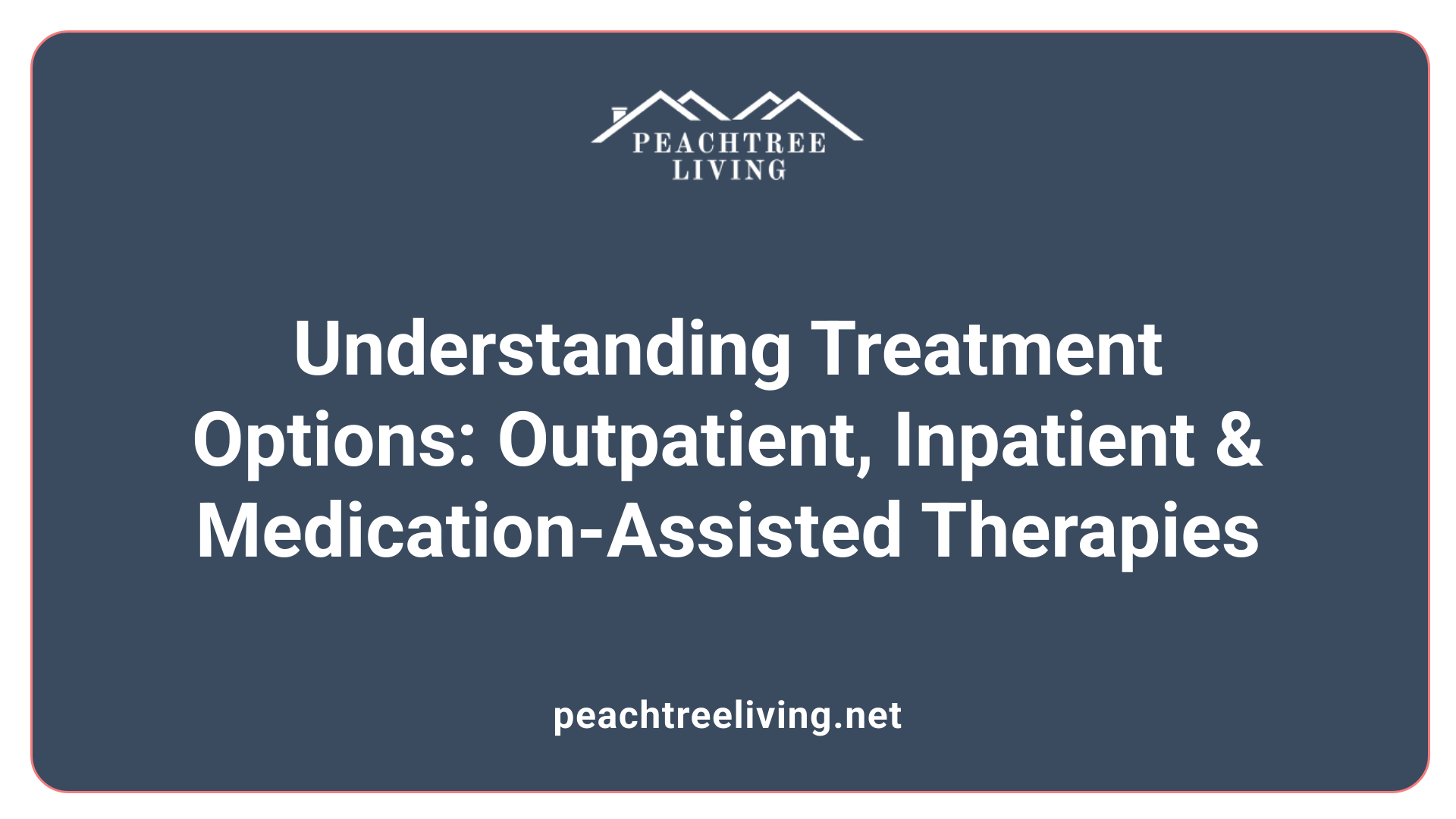Understanding the Scale and Distribution of U.S. Addiction Treatment Facilities
The United States has seen a significant expansion in its addiction treatment infrastructure over recent decades, driven by rising substance use disorders and mental health issues. This article explores the current number, distribution, and characteristics of addiction treatment centers across the country, providing a comprehensive overview of the industry’s scope and accessibility.
The U.S. Addiction Treatment Facility Count in 2023
 In 2023, there are approximately 17,561 substance abuse treatment facilities across the United States, highlighting the country's substantial infrastructure dedicated to addressing addiction issues. These facilities are part of a broader network, with a total of around 29,113 treatment centers focused on both substance use (SU) and mental health (MH), as recorded by SAMHSA.
In 2023, there are approximately 17,561 substance abuse treatment facilities across the United States, highlighting the country's substantial infrastructure dedicated to addressing addiction issues. These facilities are part of a broader network, with a total of around 29,113 treatment centers focused on both substance use (SU) and mental health (MH), as recorded by SAMHSA.
The facilities vary widely in their services and ownership models. Most are outpatient centers — about 83% of substance use treatment facilities and 81% of mental health treatment centers provide outpatient care. These outpatient facilities are often the first line of treatment, offering flexible care options for diverse populations.
The landscape includes a significant number of inpatient and residential programs, which constitute roughly 24% of treatment services. These centers typically offer longer-term care designed for individuals requiring intensive support. Notably, most facilities are operated by nonprofit agencies, but among substance use treatment centers, 43% are owned and operated by for-profit entities.
When considering distribution, some states boast over 400 facilities, especially in large populations like California, Texas, and Florida, whereas others have fewer than 50. The medication-assisted treatment (MAT) offerings, such as buprenorphine and methadone, are more prevalent in northeastern states, with southern regions showing lower adoption rates.
Bed availability also varies; on average, there are 34 beds per 100,000 people for substance use treatment and 29 beds per 100,000 for mental health. However, approximately one-third of states have less than 25 beds per 100,000 for substance use, underscoring disparities in access.
Overall, the treatment infrastructure continues to grow and adapt, driven by rising demand, regulatory changes, and an increasing emphasis on evidence-based practices to combat the ongoing opioid epidemic and other substance use issues nationwide.
Distribution and Concentration of Treatment Centers
How many addiction treatment centers are there in the U.S. and where are they mainly located?
There are approximately 14,558 specialized substance abuse treatment facilities in the United States as of 2019. These facilities include outpatient-only centers (around 5,876), residential-only facilities (about 2,846), and those offering both outpatient and residential services (approximately 5,836).
The distribution of these centers varies significantly across states. Major states like California host the highest number with over 2,000 facilities, followed by Texas with more than 1,100 centers, and Florida with over 900 centers. These states are known for their large populations and high demand for addiction treatment services.
Most treatment centers are located in urban areas within populous states, making services more accessible to large populations. Federal agencies such as SAMHSA, the NIH, and the Department of Veterans Affairs also provide substantial funding, supporting the growth and maintenance of these facilities.
The geographic spread shows that while treatment centers are widespread, access can still be uneven, especially in rural areas where fewer facilities are available. This impacts treatment availability for individuals living in less populated regions.
| State | Number of Facilities | Notes |
|---|---|---|
| California | Over 2,000 | Largest number nationally |
| Texas | Over 1,100 | Higher demand associated with large population |
| Florida | Over 900 | Major hub for addiction treatment services |
| Other states | Varies widely | Distribution reflects population density |
What about the trends over the years?
From 2004 to 2016, the number of treatment centers experienced shifts with increases in private for-profit entities and fluctuations in government or nonprofit ownership. Overall, the industry has expanded considerably due to the opioid epidemic and policy changes, such as the Affordable Care Act boosting the availability of treatment options. Today, treatment centers remain a critical component of America's efforts to combat substance use disorders across the country.
High-Overdose States and Their Treatment Infrastructure

Which states have the highest addiction rates or overdose deaths?
Understanding the geographic distribution of overdose deaths helps illuminate where treatment resources are most needed. West Virginia, Kentucky, and Tennessee stand out as states with particularly high overdose mortality rates.
West Virginia maintains the highest reported overdose death rate, at around 80.9 per 100,000 people. This alarming statistic is predominantly linked to opioid-related fatalities, a significant part of the ongoing opioid crisis. Kentucky follows closely with a rate of approximately 56 per 100,000, also reflecting substantial overdose mortality.
Tennessee records a rate of 56 per 100,000, making it another state heavily affected by overdose issues.
While these states lead in overdose rates, others like Louisiana, Maine, and Delaware also experience high numbers. Despite regional variations, West Virginia remains the most severely impacted overall.
Treatment availability in regions with high overdose rates
States with high overdose mortality generally face challenges in providing adequate treatment. For instance, access to treatment beds—both substance use and mental health—is uneven across these regions.
On average, substance use treatment beds in the U.S. number about 34 per 100,000 people, and mental health beds are around 29 per 100,000. However, in high-overdose states, many areas fall below this average. In nearly one-third of states, including some heavily affected by the crisis, fewer than 25 beds per 100,000 people are available for substance use treatment.
Most facilities in these states offer outpatient services, with over 83% of treatment centers nationwide providing outpatient care. Nevertheless, inpatient and residential options, which are crucial for severe cases, often have longer wait times. On average, there is a 28-day wait for a bed, with immediate availability in only about half of the treatment centers.
The number of facilities also varies widely; some states operate over 400 treatment centers, while others have fewer than 50. Funding and ownership models differ too, with most facilities being nonprofit, but for-profit centers, which often charge higher daily costs, are more common in some regions.
In high-overdose areas, expanding treatment infrastructure, increasing the number of available beds, and ensuring services are accessible—especially for vulnerable populations like adolescents—are ongoing priorities. Effective treatment, combined with prevention efforts, is essential to reduce overdose deaths and support recovery in these critical regions.
Resources for Finding Treatment Centers
 When seeking addiction treatment in the United States, numerous resources are available to guide individuals in locating appropriate facilities. A primary and authoritative source is FindTreatment.gov, managed by SAMHSA (Substance Abuse and Mental Health Services Administration). This online platform offers a comprehensive, regularly updated directory of treatment centers nationwide, including options for opioid use disorder medications like buprenorphine and methadone.
When seeking addiction treatment in the United States, numerous resources are available to guide individuals in locating appropriate facilities. A primary and authoritative source is FindTreatment.gov, managed by SAMHSA (Substance Abuse and Mental Health Services Administration). This online platform offers a comprehensive, regularly updated directory of treatment centers nationwide, including options for opioid use disorder medications like buprenorphine and methadone.
In addition to the federal website, several organizations compile lists of treatment providers across the country. The Hazelden Betty Ford Foundation operates many centers offering combined addiction and mental health services. They accept various insurance plans, and provide both in-person and virtual treatment options, making access more flexible.
The American Addiction Centers is another prominent network that maintains a broad array of treatment facilities. Their platform allows users to verify insurance coverage, select locations, and customize treatment plans suited to individual needs. These facilities offer services ranging from detoxification and inpatient care to outpatient programs and sober living arrangements.
Local and regional health departments often maintain directories or referral services for nearby treatment centers. These can be especially helpful for finding facilities that accept Medicaid or offer free or sliding scale options. Many states also have healthcare networks and community organizations providing personalized assistance.
Overall, these resources ensure that individuals seeking help can find licensed, accredited centers tailored to their specific health needs and financial situations. The combination of federal, national, and local directories creates an accessible framework for connecting people to the appropriate treatment options they need to recover.
Types of Treatment Modalities and Their Distribution

Outpatient vs inpatient treatment
Most substance abuse treatment facilities in the U.S. offer outpatient services, with approximately 83% of these centers providing such programs. Outpatient treatment allows individuals to live at home while attending scheduled therapy sessions, making it accessible for many. Residential or inpatient programs, which involve living on-site for extended periods, are offered by about 24% of facilities. These long-term residential services provide intensive support, with some centers offering inpatient or residential programs that last 28 days or more.
Medication-assisted treatment (MAT)
Medication-assisted treatment has become a vital part of addressing opioid use disorder and other substance dependencies. In 2017, about 40% of addiction treatment facilities provided medications like methadone, buprenorphine, or naltrexone, an increase from earlier years. States in the northeast, such as Rhode Island, Vermont, and Massachusetts, tend to have higher utilization rates of these medications. However, adoption varies significantly across regions, with some southern states showing very low usage rates.
Specialized programs (adolescents, veterans)
Many treatment centers tailor their programs for specific populations. About 24% of facilities offer adolescent-specific treatment, often with immediate bed availability and specialized care. Veterans and LGBT clients also find targeted support, with around 31% and 33% of facilities providing specialized services respectively. These tailored approaches aim to increase engagement and improve outcomes for these groups, emphasizing the importance of personalized treatment strategies.
Trends and Developments in the Industry
Growth of for-profit clinics
The addiction treatment industry in the U.S. has experienced notable growth in for-profit facilities over recent years. In 2023, approximately 6,393 centers are operated for profit, accounting for a significant portion of the total treatment infrastructure. This growth reflects increasing private sector involvement, driven by rising demand and investment opportunities. Many of these for-profit clinics prioritize outpatient services, which comprise over 83% of treatment offerings, and often have faster bed availability compared to nonprofit counterparts.
Use of evidence-based practices
Treatment quality has improved over time, with a marked increase in the adoption of evidence-based therapies. As of 2017, over 90% of treatment facilities reported using behavioral therapies such as cognitive behavioral therapy (CBT) and motivational interviewing (MI). Additionally, the use of medication-assisted treatments like methadone and naltrexone has risen, especially in northeastern states. However, gaps remain; only 18% of facilities in 2017 conducted testing for infectious diseases like hepatitis C and HIV, highlighting ongoing challenges in comprehensive care.
Funding and policy impacts
Funding significantly influences the availability and quality of treatment services. In 2019, SAMHSA awarded $1.9 billion in grants to support addiction treatment centers nationwide. Despite this, the proportion of facilities receiving government funding has declined from over 60% in early 2000s to about 52% in 2016, affecting access in some regions. States like Wyoming and West Virginia invest heavily in free and public programs, resulting in better access and lower overdose rates. Policy initiatives, including Medicaid expansion and increased federal grants, play vital roles in shaping the landscape of addiction treatment in the U.S.
Emerging Challenges and Opportunities
Accessibility and wait times
Many addiction treatment facilities across the U.S. face challenges related to accessibility. Despite a growing number of facilities—over 17,000 in 2023—only about half of residential centers have beds immediately available for adolescents. The average wait time for a bed is approximately 28 days, which can delay crucial intervention.
States vary significantly in their capacity to meet demand. For instance, only 54% of facilities provide immediate availability, highlighting gaps in accessibility, especially in rural or underserved areas.
Cost of treatment
The cost of addiction treatment remains a significant hurdle for many individuals. Residential care can be expensive, with average daily costs around $878 and monthly expenses exceeding $26,000. Such high costs can be prohibitive, especially for those without adequate insurance coverage.
For-profit facilities tend to charge higher rates but often offer more immediate availability, whereas nonprofit centers may offer more affordable options with longer wait times.
Insurance and payment options
Insurance coverage is critical for access to treatment. Most facilities accept private insurance and Medicaid, yet participation rates vary by state and ownership model. For instance, only about 20% of for-profit centers accept Medicaid, compared to 80% of nonprofit facilities.
This variation influences who can receive timely treatment. Some states, like Wyoming and West Virginia, invest heavily in free and public programs, enhancing access without relying solely on insurance.
Quality assurance and accreditation
Quality standards in treatment facilities are essential for effective care. As of 2017, about 51% of facilities were accredited by recognized organizations, helping ensure adherence to certain quality benchmarks. However, gaps remain, especially in testing for infectious diseases like hepatitis C and HIV, with only 18% of facilities conducting such screenings.
Improvements in accreditation, coupled with consistent implementation of evidence-based therapies like cognitive behavioral therapy and medication-assisted treatment, can further raise the standard of care across the nation.
| Aspect | Status | Impact | Notes |
|---|---|---|---|
| Bed availability | Varies by state | Affects access | Average of 34 beds per 100,000 people for substance use |
| Cost | High at residential centers | Limits treatment access | Monthly costs over $26,000 |
| Insurance acceptance | Widely accepted, but inconsistent | Influences treatment entry | 54% of centers accept Medicaid |
| Accreditation | 51% accredited (2017) | Ensures quality | Gaps in disease testing |
Continued efforts to expand capacity, reduce costs, and improve quality assurance are vital to meet the growing demand for effective addiction treatment services in the U.S.
Impact of the Opioid Epidemic and Policy Responses
Legislative and Funding Initiatives
The opioid epidemic has driven the expansion of addiction treatment infrastructure in the United States. Notably, government agencies like SAMHSA have played a critical role, providing grants—totaling approximately $1.9 billion in 2019—to support treatment centers nationwide. These initiatives aim to increase access, especially in high-need areas, by funding new facilities and expanding existing ones.
Medication-Assisted Treatment Expansion
Efforts to incorporate medication-assisted treatment (MAT) have increased significantly. For example, the availability of services such as methadone and buprenorphine has risen, with northeastern states like Rhode Island, Vermont, and Massachusetts leading in usage. This approach, combined with behavioral therapies, is vital in managing opioid use disorder, which has become more treatable through dedicated programs.
Public Health Campaigns
Nationwide public health campaigns emphasize awareness, prevention, and treatment of substance use disorders. These initiatives aim to destigmatize addiction, promote the use of evidence-based therapies, and inform communities about available treatment resources. Platforms like FindTreatment.gov facilitate access by providing searchable directories of treatment facilities, encouraging individuals to seek help promptly.
The combined influence of these strategies reflects a multifaceted effort to combat the ongoing opioid crisis, improve treatment access, and reduce overdose deaths across the country.
Screening, Testing, and Preventive Services
How do addiction treatment facilities screen for infectious diseases?
Screening for infectious diseases is an important part of comprehensive addiction treatment. Many facilities routinely test for hepatitis C, HIV, and other sexually transmitted diseases (STDs) to ensure timely diagnosis and management.
What is the prevalence of testing for hepatitis C, HIV, and STDs?
However, data shows that in 2017, only 18% of addiction treatment facilities conducted testing for hepatitis C, HIV, and STDs. This low percentage indicates significant gaps in infectious disease screening across the country.
Why is infectious disease screening important?
Infectious diseases like hepatitis C and HIV are common among individuals with substance use disorders, especially those who inject drugs. Screening helps identify infections early, reduce transmission, and link patients to necessary medical care.
Variability among facilities
State-level and facility-level differences are evident. While some facilities and states have integrated routine testing into their services, many do not prioritize these screenings. Accredited and higher-quality facilities are more likely to include infectious disease testing as part of their comprehensive care approach.
Improving screening practices
Efforts to increase testing rates involve policy initiatives, funding, and training of staff. Expanding access to testing, especially for vulnerable populations like adolescents and underserved communities, remains a priority.
Resources for further info
For more detailed information on infectious disease screening practices in U.S. addiction treatment centers, searching for "Infectious disease screening in U.S. addiction treatment centers" can provide updated reports and strategic guidance.
The Future of Addiction Treatment in the U.S.
Innovations and new treatment models
The landscape of addiction treatment in the United States is continuously evolving, driven by technological advances and improved understanding of substance use disorders. New treatment approaches like medication-assisted treatment (MAT) are increasingly adopted, especially in northeastern states where methadone and naltrexone use are high. Additionally, emerging models such as integrated care centers combine mental health and substance use treatment under one roof, promoting a holistic approach.
Furthermore, innovative funding and ownership models are being explored. While most facilities are non-profit, for-profit centers are expanding, and some states see significant growth in government-funded and private facilities. This diversification aims to improve access and quality across different populations and regions.
Integration of mental health and substance use treatment
Historically, mental health and substance use issues were treated separately. However, with over 17,000 facilities providing substance use treatment and a similar number offering mental health services, integration is becoming a major focus. Facilities offering both services are reported to provide better outcomes by addressing co-occurring disorders holistically.
Most treatment settings now emphasize comprehensive care, including mental health screenings, testing for infectious diseases, and tailored programs for specific communities, such as adolescents and veterans. This integrated approach increases the likelihood of treatment completion and sustained recovery.
Telemedicine and digital health
Digital health solutions and telemedicine are transforming addiction treatment. Especially highlighted during the COVID-19 pandemic, virtual therapy sessions, online support groups, and remote monitoring have expanded access to care.
These technological tools are particularly vital for reaching residents in rural or underserved areas, where treatment beds and specialized services may be scarce. Telehealth’s growth is supported by regulatory adjustments, and it is expected to play an increasing role in comprehensive recovery programs, making treatment more accessible and flexible.
The ongoing adaptation of these innovations promises to improve treatment efficacy, reduce barriers to care, and support long-term recovery in the evolving landscape of U.S. addiction treatment.
Summary and Outlook for U.S. Addiction Treatment Services
The landscape of addiction treatment in the United States is vast and continually evolving to meet the growing needs of individuals battling substance use and mental health disorders. With over 17,000 facilities nationwide, a diverse array of treatment modalities, and ongoing innovations in delivery and technology, the U.S. offers a comprehensive network aimed at addressing critical public health challenges. Continued investment, policy support, and the adoption of evidence-based practices are essential to expand access and improve outcomes. As the nation confronts the opioid epidemic and other substance-related crises, understanding the scope and distribution of these facilities provides vital insights into the ongoing efforts to deliver effective, accessible care to those in need.
References
- Number of substance abuse treatment facilities U.S. - Statista
- A Look at Substance Use and Mental Health Treatment Facilities ...
- [PDF] National Survey of Substance Abuse Treatment Services (N-SSATS)
- How Many Addiction Treatment Centers Are In The U.S? - Townsend
- Residential addiction treatment for adolescents is scarce and ...
- Drug Rehab Success Rates and Statistics
- Key Resources and Tools for N-SUMHSS | CBHSQ Data - SAMHSA
- FindTreatment.gov: Home
- Tracking the Quality of Addiction Treatment Over Time and Across ...

